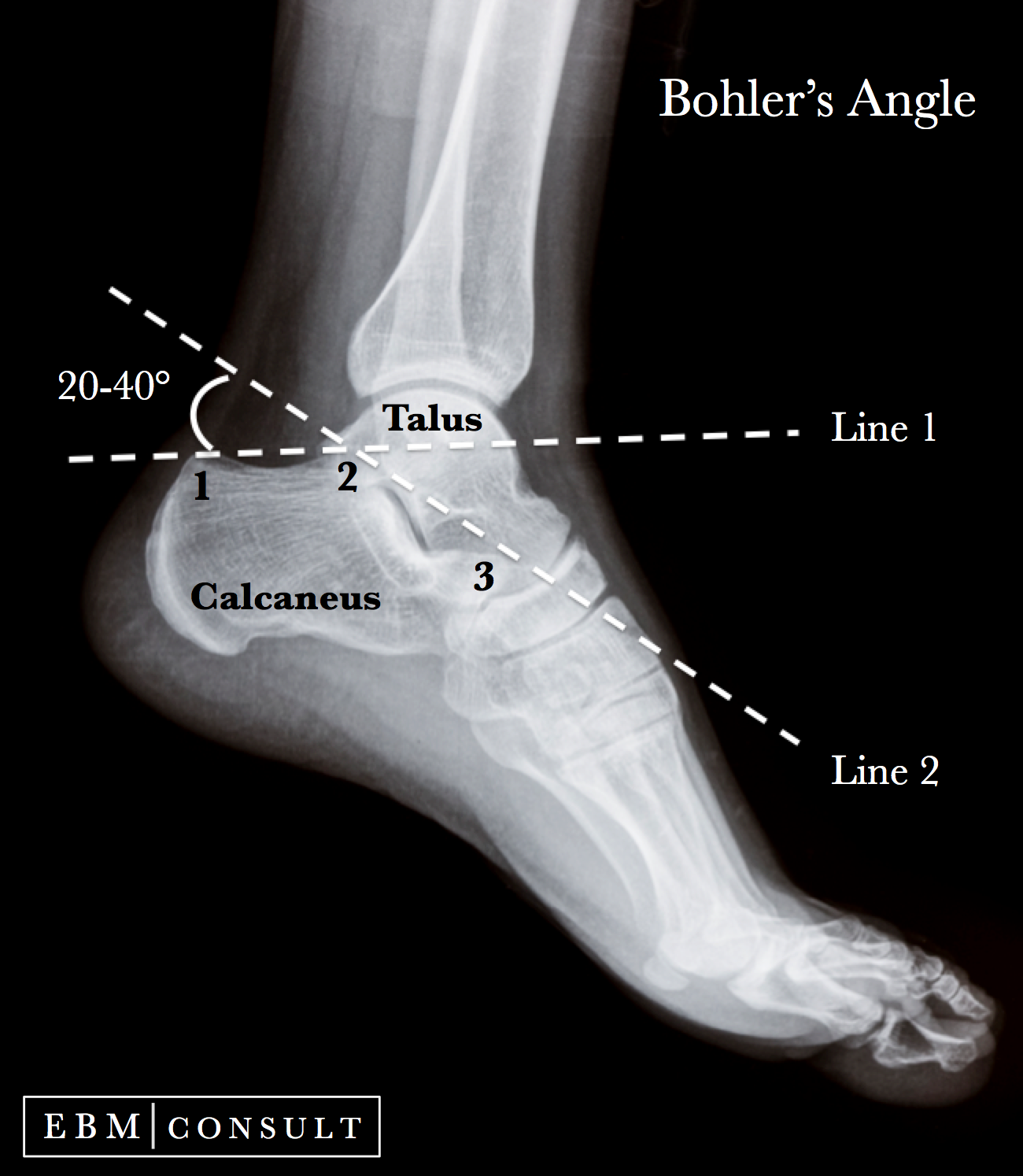Bohler's Angle: How to Determine Presence of a Calcaneus Fracture
|
|---|
- The normal range is 20 to 40 degrees
- Angles < 20 degrees is suggestive of a calcaneus fracture and/or disruption of the posterior facet
- The posterior facet of the calcaneus bone is the point that articulates with the posterior process of the talus.
- Some refer to point 2 to be the midpoint of calcaneus bone
- Some refer to point 3 as being the lowest point
- In a retrospective study at a single level 1 trauma center of 120 consecutive ankle radiographs for ankle injuries but normal bone anatomy the mean +/- SD of Bohler's angle was 30 +/- 6 degrees (range, 14 to 50 degrees), no differences between gender, no differences between right or left ankles and found that if 28 degrees was taken as cut off there would be a 31% false positive rate, 20 degrees would create a 2.5% false positive rate, and if 18 degrees was the cut off would give < 1% false positives.
- A randomized, blinded, case-control study of 133 patients found that emergency physicians were 97.9% accurate at diagnosing calcaneus fractures without the assistance of angles, but that determining Bohler's angle can still be helpful and has good interrater reliability.
- For details of these studies click here
- Radiology Review: Critical Angle of Gissane for the Assessment of a Calcaneus Fracture
- EBM Focused Topic: Use of Bohler's Angle in the Assessment of Calcaneus Fractures
- EBM Focused Topic: Ottawa Ankle Rule for Assessment of Blunt Ankle Injury
- Physical Exam: The Anterior Drawer Test
- Physical Exam: The Posterior Drawer Test
Bohler's Angle (a.k.a., "Tuber Angle")
Bohler's angle (also sometimes referred to as the "Tuber Angle") is formed by the intersection of lines 1 and line 2 on the lateral ankle radiograph.
Line 1
Line 1 is made by connecting point 1 on the radiograph (the most cephalic part of the posterior process of the calcaneus bone) to point 2 (the most cephalic or highest point of the posterior facet).
Line 2
Line 2 is created by connecting point 2 on the radiograph (the most cephalic or highest point of the posterior facet of the calcaneus bone) to point 3 (the highest point of the calcaneus bone that forms the articular surface for the cuboid bone).
Clinical Data
Related Content
Other articles that may be useful to this topic and found at EBM Consult are listed below:


